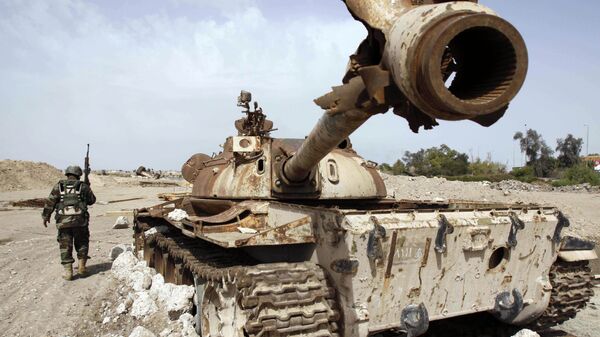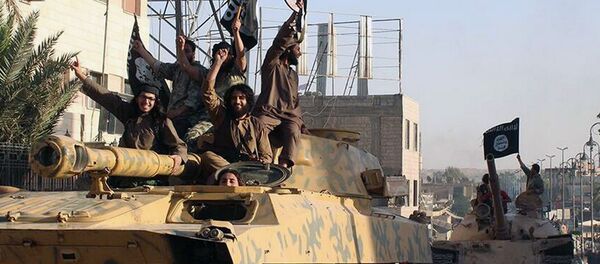Iraq, says the GTI, has ranked as the most impacted country by terrorism for every year since 2004.
From 1998 to 2002 there were 65 deaths from terrorism in Iraq. With the commencement of the Iraq war there were nearly five times as many deaths in the first year of the war than in the previous five years. There have been two distinct periods when terrorism has jumped in Iraq. The first occurred in 2007 with the US troop surge when 6,100 deaths were reported, an increase of 39% from the previous year. The knock-on effect led to the rising tide of terrorism in Afghanistan and then in Pakistan. The second terrorist surge in Iraq began in 2013 and has continued through to 2015 fuelled by increasing sectarian violence and the activities of ISIL.
In 2014, says the GTI, the highest ever levels recorded in a single country over one year were in Iraq with 9,929 deaths, an increase of 55% from 2013. There were three times as many terrorist deaths in Iraq in 2014 than in the entire world in the year 2000.
Afghanistan, Iraq and Pakistan have all been ranked in the ten countries with the highest number of deaths from terrorism for every year in the last ten years. This reflects that terrorism has remained a significant issue in these three countries ever since 2003.
Presenting the previous GTI Executive Chairman of the Institute for Economics and Peace Steve Killelea concluded: "The GTI highlights that many of the countries suffering the most from terrorism have also suffered from foreign military intervention. Although the 'responsibility to protect' is paramount, caution needs to be taken against unwanted consequences. I urge policymakers to use the findings of this report to help redefine tackling terrorism strategies and help shift focus towards peace."
Syria, a country ravaged by civil war, continues to see escalating terrorist activity. In the two years before the start of the civil war in 2011, Syria did not have a single terrorist incident. In the year the civil war began Syria had 136 deaths from terrorism. The number of deaths has increased by around 500 each year since the start of the war to 1,698 deaths in 2014. Terrorism in Syria is mainly in the form of explosions targeting private citizens conducted by ISIL and the al-Nusra Front.
It is estimated that over 200,000 people have been killed in the Syrian civil war. The majority of these deaths are classified as a result of conventional warfare rather than acts of terrorism. However, terrorism has been deployed as a tactic by some of the rebel forces to bring about a political, economic, religious, or social goal rather than purely military objectives.
Libya recorded a 255% increase in terrorist fatalities in 2014 compared to the previous year. Terrorism in Libya is linked to the Libyan crisis which began in 2011 after the Arab Spring and subsequent military battle to overthrow leader Muammar Gaddafi. There were no deaths from terrorism in Libya until 2012 when 28 people were killed in 51 separate attacks. In 2013 terrorism more than quadrupled to 121 deaths.
Globally, from 2013 to 2014 the number of deaths from terrorism increased by 14,574, which represents an 80% increase.
Defining terrorism is not a straightforward matter. There is no single internationally accepted definition of what constitutes an act of terror. The GTI index is said to be based on accounts of the direct and indirect impact of terrorism in 162 countries in terms of its effect on lives lost, injuries, property damage and the psychological aftereffects of terrorism. Hence, the GTI defines terrorism as ‘the threatened or actual use of illegal force and violence by a non‐state actor to attain a political, economic, religious, or social goal through fear, coercion, or intimidation. This definition recognises that terrorism it not only the physical act of an attack, but also the psychological impact it has on a society for many years after.
Another impact on societies that are not even directly involved in civil strife elsewhere is the rise in "terror tourism." The flow of foreign fighters into Iraq and Syria continued in 2014 and 2015, says the GTI. Between 25,000 and 30,000 foreign fighters have arrived in Syria and Iraq since 2011; seven thousand in the first six months of 2015. Excluding Turkey, Europe accounted for 21% of all foreign fighters in 2014.
The largest numbers of fighters from European countries come from France, Germany, United Kingdom and Belgium. Although the report does not account for 2015, its findings about the provenance of Western jihadis have just been corroborated by the series of deadly attacks in Paris, perpetrated by home grown extremists.
So what drives Westerners into the deadly embrace of ISIL and the likes? The GTI report finds that in OECD countries, socio-economic factors correlate significantly with the terrorism index:
• Negative perception of immigration
• High militarization
• Low confidence in the press
• High perception of criminality
• High income inequality
• Lower government effectiveness
• Wider access to small arms
• Lower confidence in the education
• Higher youth unemployment
• Higher urbanization
• Lower faith in democracy
• Lower social cohesion
• Higher drug crime
This suggests, according to the GTI, that social disenfranchisement is a leading cause of terrorist activity. This reflects the key finding that over 70% of deaths from terrorism in the OECD from 2006 to 2014 were committed by lone wolf terrorists, i.e. individuals without the direct orders and support of an organised terrorist group. It looks like the next report, accounting for 2015, may have a different view on the matter, given the latest carnage in Paris.





